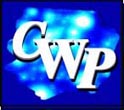

A Review Essay on "Lise Meitner and the Dawn of the Nuclear Age" by Patricia Rife
Gary R. Goldstein
Department of Physics
Tufts University
Medford, MA 02155 USA
July 13, 2000
Published in Peace and Change: a Journal of Peace Research, vol.26, 95 (2001).
|
References |
|
|
[1] |
|
|
[2] |
|
|
[3] |
|
|
[4] |
|
|
[5] |
|